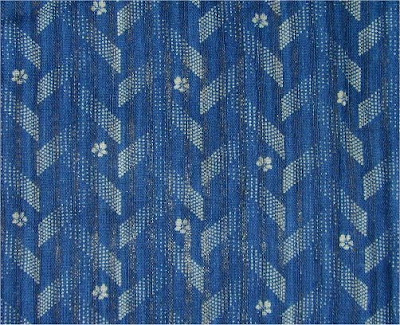When thinking of blue dyed fabric, it's usually indigo that comes to mind. Indigo dye, from the Indigofera genus and native to Asia, was known in Europe very early, but was not widely used until the 16th century. For many years, indigo was imported from India and the Far East. Later, it was also imported from the New World. The other blue dye that was used before the 1890s is native to Eastern Europe. It is called pastel in French and 'woad' in English and is from the plant called Isatis tinctoria.
Pastel is tubfast, colorfast and amazingly, also has insecticidal properties. It was used in dozens of ways as diverse as body paint by the Scottish warriors, for medicinal purposes in the Middle Ages and as a fabric dye in most parts of Europe. It was even painted on cows' horns to protect them from parasites and was often used to paint houses and shutters to help protect against termites and other insects.
Neither indigo or pastel dye is in a usable state in the leaves themselves. Both plants must have their leaves fermented and processed in order to produce the powdered blue dye. It takes more than a ton of leaves to produce a pound or so of usable dye.
Until the advent of aniline dyes, Marseille was the primary port of entry for importing indigo. Pastel was grown in France in the region around Toulouse and created great fortunes there, evidenced by the chateaux that dot the countryside. By 1900, synthetic indigo dominated the market. Sadly, the cultivation of natural plant dyes was mostly abandoned.
Below are a couple of pictures of indigo resist-dyed French fabrics from the late 18th and early 19th centuries. (Resist dyeing is done by first painting wax on the fabric where the white pattern is desired. The cloth is then put into the dye bath so all except the waxed areas turn blue.)
For pastel fabrics, dyes and other products, check out the French website called Bleu de Pastel de Lectoure.

















